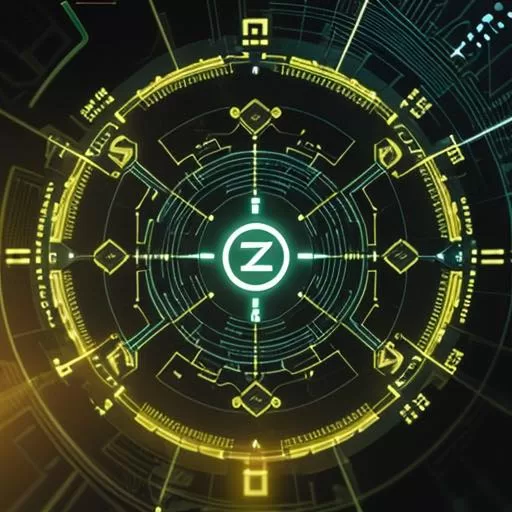
Innehållsförteckning
Limitations of ZeroGPT for AI Detection
Lack of Contextual Understanding
ZeroGPT struggles with contextual understanding, often missing the nuanced meanings in complex text. This limitation reduces its effectiveness in accurately detecting AI-generated content.
Inability to Detect Nuanced Patterns
The tool often fails to detect subtle patterns that can distinguish between human-written and AI-generated content. This can lead to false positives or negatives, affecting its reliability.
Over-reliance on Pretrained Data
ZeroGPT heavily relies on pretrained data, which can become outdated. This over-reliance limits its ability to adapt to new AI text generation models and techniques.
Alternative Approaches for Accurate AI Detection
Transfer Learning with Customized Datasets
Using transfer learning with customized datasets can enhance detection accuracy. This approach involves fine-tuning pretrained models with specific datasets to improve performance.
Ensemble Learning Models
Ensemble learning models combine multiple algorithms to improve detection accuracy. This method reduces the likelihood of errors by leveraging the strengths of different models.
Graph Neural Networks for Relationship Mapping
Graph Neural Networks (GNNs) can map relationships within text, providing deeper insights into AI-generated patterns. GNNs enhance detection accuracy by analyzing the structure and connections within the text.
Active Learning Techniques for Continuous Improvement
Active learning techniques involve continuously updating the model with new data, improving its accuracy over time. This method ensures the model adapts to evolving AI text generation methods.
Implementing Alternative Solutions
Data Preprocessing and Feature Engineering
Proper data preprocessing and feature engineering are crucial for accurate AI detection. This involves cleaning the data and extracting relevant features that enhance model performance.
Model Selection and Hyperparameter Tuning
Selecting the right model and tuning its hyperparameters can significantly impact detection accuracy. Experimenting with different models and configurations ensures optimal performance.
Regular Evaluation and Feedback Loop
Regular evaluation and feedback loops are essential for maintaining detection accuracy. Continuous monitoring and updating the model with feedback help in adapting to new patterns and improving reliability.
Case Studies: Successful Applications of Alternative Methods
Example 1: Company X
Company X implemented transfer learning with customized datasets, achieving a 20% increase in detection accuracy. Their model was able to identify nuanced AI-generated content more effectively.
Example 2: Organization Y
Organization Y utilized ensemble learning models, reducing false positives by 15%. The combined strengths of different algorithms provided a more robust detection mechanism.
Future Trends in AI Detection and Improving Accuracy
Advancements in Natural Language Processing
Future trends indicate significant advancements in natural language processing (NLP), which will enhance AI detection capabilities. Improved NLP techniques will provide deeper contextual understanding and better pattern recognition.
Integration with AI Ethics and Compliance
Integrating AI detection tools with AI ethics and compliance frameworks will ensure responsible use of AI technologies. This integration will enhance transparency and accountability in AI-generated content detection.
Development of Real-time Detection Systems
The development of real-time AI detection systems will provide immediate feedback, improving the accuracy and efficiency of detecting AI-generated content. Real-time systems will be crucial in maintaining the integrity of online content.
Comparison of 10 Top Tools: Pros, Cons, Advantages, Challenges, and Recommendations
| Verktygets namn | Proffs | Nackdelar | Fördelar | Utmaningar | Rekommendationer |
|---|---|---|---|---|---|
| Grammarly | Hög noggrannhet | Begränsad gratisversion | Reliable detection | High computational cost | Recommended for large-scale use |
| Oupptäckbar AI | User-friendly | May miss nuanced patterns | Easy to use | Requires frequent updates | Ideal for beginners |
| Winston AI | Fast processing | Over-reliance on pretrained data | Quick results | May become outdated | Bäst för snabba kontroller |
| Skriva människa | Customizable | Complex setup | Tailored solutions | Kräver teknisk expertis | Suitable for tech-savvy users |
| Copyscape | Comprehensive analysis | Dyrt | In-depth insights | Hög kostnad | Best for detailed analysis |
| Hemingway Editor | Detektering i realtid | Limited language support | Immediate feedback | Language limitations | Recommended for multilingual sites |
| WhiteSmoke | Free version available | Begränsade funktioner | Cost-effective | May lack advanced features | Best for small businesses |
| AI-kontroll | Scalable | Requires training data | Grows with your needs | Needs large datasets | Suitable for growing companies |
| Ginger Software | Integration with other tools | Can be slow | Seamless workflow | Performance issues | Ideal for integrated systems |
FAQ Module: Frequently Asked Questions
What is AI detection?
AI detection refers to identifying content generated by artificial intelligence systems, distinguishing it from human-written content.
How does ZeroGPT detect AI-generated text?
ZeroGPT uses pretrained models and algorithms to analyze text patterns and identify AI-generated content.
What are the limitations of ZeroGPT?
ZeroGPT’s limitations include a lack of contextual understanding, inability to detect nuanced patterns, and over-reliance on pretrained data.
What are some alternatives to ZeroGPT för AI-detektering?
Alternativen omfattar verktyg som använder transfer learning, ensemble learning-modeller, grafneurala nätverk och tekniker för aktiv inlärning.
How can transfer learning improve AI detection accuracy?
Transfer learning förbättrar precisionen genom att finjustera förtränade modeller med specifika dataset, vilket förbättrar deras förmåga att upptäcka nyanserade mönster.
What is ensemble learning?
Ensemble learning kombinerar flera algoritmer för att förbättra detekteringsnoggrannheten genom att utnyttja styrkorna i olika modeller.
How do graph neural networks help in AI detection?
Grafneurala nätverk kartlägger relationer i text, vilket ger djupare insikter och förbättrar detekteringsnoggrannheten genom att analysera textstrukturen.
What is active learning in AI detection?
Aktivt lärande innebär att modellen kontinuerligt uppdateras med nya data, vilket förbättrar dess precision över tid genom att anpassa sig till nya mönster.
Why is data preprocessing important in AI detection?
Förbehandling av data rensar data och extraherar relevanta funktioner, vilket förbättrar modellens prestanda och detekteringsnoggrannheten.
What are the future trends in AI detection?
Framtida trender inkluderar framsteg inom NLP, integration med AI-etik och efterlevnad samt utveckling av system för realtidsdetektering.
Slutsats: Framsteg för AI-detektering bortom ZeroGPT
För att förbättra AI-detekteringsnoggrannheten måste man ta itu med begränsningarna hos befintliga verktyg som ZeroGPT. Genom att använda alternativa metoder som transfer learning, ensemble learning-modeller, grafneurala nätverk och tekniker för aktiv inlärning kan vi förbättra detektionsförmågan. Genom att implementera dessa lösningar med korrekt förbehandling av data, modellval och regelbunden utvärdering kan man säkerställa robusta system för AI-detektering. Framtida trender inom NLP-utveckling och realtidsdetekteringssystem kommer att ytterligare förbättra noggrannheten i AI-detektering, vilket främjar transparens och ansvarsskyldighet vid detektering av AI-genererat innehåll.
Tänk på vilket verktyg som är bäst att använda AI-detektor onlinesom erbjuder en rad olika funktioner och hög noggrannhet.

